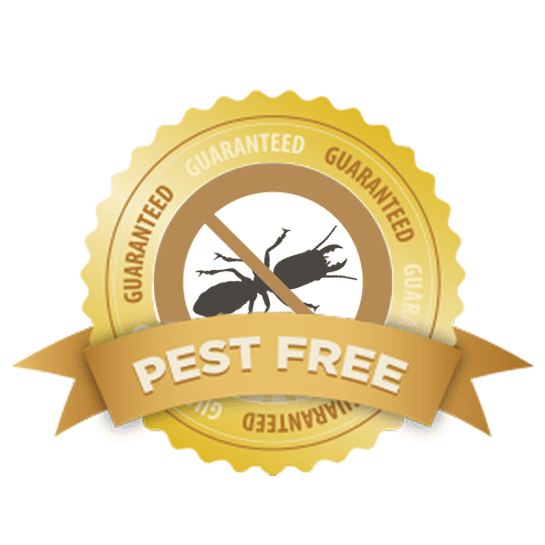Reliable A1 Bed Bug Treatment in Charlotte - Safe and Proven Methods
Reliable A1 Bed Bug Treatment in Charlotte - Safe and Proven Methods
Blog Article
Bed Bug Treatment Failure: Contrasting Chemical Vs. Non-Chemical Solutions
In the realm of pest control, particularly when taking care of the consistent problem of bed insects, the selection between chemical and non-chemical treatment remedies can be a pivotal one. Both strategies provide unique benefits and disadvantages, affecting elements such as performance, security considerations, and total expense. By taking a look at the nuanced information of each method, a clearer understanding of which course to seek in addressing a bed insect invasion can be acquired.
Efficiency of Chemical Therapies
Chemical treatments for bed bug invasions have been extensively recognized for their powerful and rapid efficacy in eradicating these insects. When thinking about the efficiency of chemical therapies, it is crucial to recognize that they can provide a quick and detailed remedy to a bed insect trouble. Professional pest control men commonly depend on insecticides to target bed insects at numerous stages of their life cycle, including eggs, grownups, and nymphs. These chemicals generally work by interfering with the bed pests' nerve system, bring about paralysis and ultimate death.
Furthermore, chemical treatments have the benefit of providing recurring effects, meaning that they can remain to get rid of bed pests also after the first application. This recurring action is especially valuable in combating any type of potential re-infestations. Furthermore, the quick action of chemical therapies can bring relief to people encountering serious bed pest problems, allowing them to restore control of their home swiftly.
Security Issues With Chemical Solutions
One critical element that requires cautious factor to consider when making use of chemical services for bed pest therapy is making certain the safety of owners and the environment. Direct exposure to particular chemicals utilized in bed pest treatments can lead to breathing concerns, skin irritability, or various other negative reactions, specifically in individuals with pre-existing conditions or sensitivities.
Additionally, the environmental impact of chemical remedies is an additional significant consideration. Some chemicals made use of in bed insect therapies might be unsafe to valuable bugs, wildlife, and ecological communities if they leach right into the soil or water systems. It is vital to utilize chemical treatments carefully, adhering to safety guidelines, and considering much less harmful alternatives to reduce these dangers and ensure the efficient and safe monitoring of bed pest problems.
Benefits of Non-Chemical Approaches
Thinking about the potential safety issues and ecological influence linked with chemical remedies for bed insect therapy, discovering non-chemical strategies provides a promising option with several distinct advantages. Non-chemical therapies are environmentally pleasant, as they do not contribute to air or water air pollution, making them a lasting option for pest control.
Additionally, non-chemical options can be reliable in targeting bed insects, consisting of hard-to-reach areas where chemical therapies might not permeate - A1 bed bug treatment in charlotte. Techniques such as warm therapy, vacuuming, steam cleansing, and mattress coverings provide complete obliteration without the use of hazardous chemicals.
Limitations of Non-Chemical Treatments

Additionally, non-chemical therapies typically call for numerous applications to achieve successful removal. This can be time-consuming and might not constantly guarantee total elimination of all bed insects and their eggs, particularly in covert or hard-to-reach areas.
Moreover, the success of non-chemical therapies greatly depends on appropriate execution and thoroughness, which can be challenging for people without professional competence. Poor application of non-chemical techniques might cause insufficient removal, leading to relentless invasions and the need for added treatments.
Therefore, while non-chemical therapies have their benefits, it is vital to recognize these limitations and consider them when determining one of the most reliable approach for taking care of bed bug invasions.
Price Comparison: Chemical Vs. Non-Chemical Options
Given the restrictions related to non-chemical therapies, a crucial aspect to examine in the context of bed insect monitoring is the cost comparison between chemical and non-chemical choices. Chemical treatments generally involve the application of pesticides by experts, which can range from $250 to $900 per area, relying on the seriousness of the infestation and the size of the location to be dealt with. On the other hand, non-chemical therapies like heat therapy or heavy steam can be a lot more pricey, with prices ranging from $1,000 to $6,000 for a whole home. While the first expense of chemical therapies might seem i thought about this lower, numerous therapies might be called for to fully remove the invasion, potentially enhancing the total expense. On the various other hand, non-chemical choices might offer a more environmentally friendly and lasting service, although they can be cost-prohibitive for some individuals. Ultimately, when thinking about the cost of bed pest treatment options, it is necessary to consider the upfront expenditures versus the performance and long-lasting sustainability of the picked technique.
Conclusion

Thinking about the prospective safety concerns and ecological visit their website influence connected with chemical remedies for bed pest therapy, checking out non-chemical strategies offers an appealing choice with a number of distinct benefits.Provided the restrictions connected with non-chemical therapies, a necessary element to examine in the context of bed bug monitoring is the cost comparison in between chemical and non-chemical choices. In comparison, non-chemical treatments like warm therapy or steam can be a lot more expensive, with costs ranging from $1,000 to $6,000 for a whole home. While the first price of chemical treatments may seem lower, numerous therapies might be required to completely remove the infestation, potentially increasing the total price.In conclusion, when contrasting chemical and non-chemical bed insect therapy options, it is necessary to consider effectiveness, safety, advantages, limitations, and cost.
Report this page